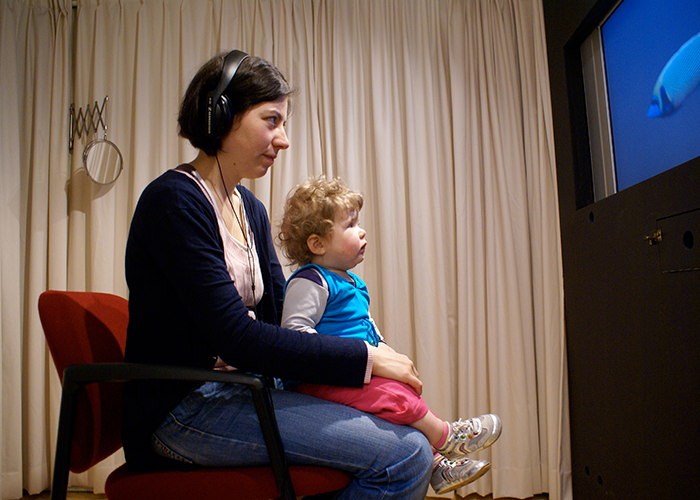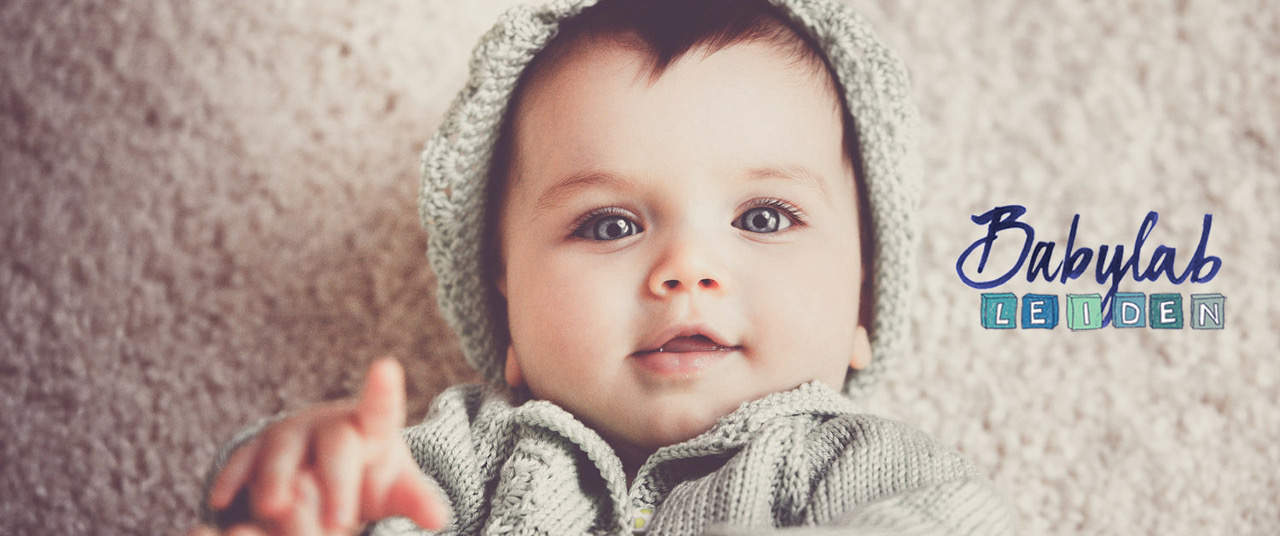Research methods
Because we cannot directly ask babies about what they know or what they are thinking about, we must find smart and baby-friendly ways to figure it out! Below you can read about the different methods that we typically use in our studies.
Attention measures
From how much attention babies pay to what they see or hear, we can infer a lot about what they know or expect to happen.
Looking times
The duration of looking at something tells us how much attention babies need to understand what they see. When babies don’t pay much attention to something, we can interpret that what they are seeing is already familiar to them, while longer looking can mean that what they are looking at is new or surprising to them. We often show babies different images or short animations and then compare which image or animation elicits longer looking times. These measures can inform us about babies’ expectations and existing knowledge.

Eye movements
For this type of research, we use an apparatus called an eye-tracker. This is a monitor with built-in cameras and infrared lights. Due to the reflection of the harmless infrared lights on the eyes, the device can measure exactly where babies are looking on the monitor. With the help of the eye-tracker we can thus determine which aspect of an image or a movie is important for the babies, how they process what they see, and whether they show anticipatory eye-movements when they expect something to happen.

Pupil Dilation
When we use the eye-tracker, it can also measure how wide the pupils dilate while looking at an image. We know that when pupils are wider, more processing is going on. This measure can therefore help us to determine how “hard” a baby has to think when watching a picture or a movie.
Language
For research on speech development, we create environments where one-and-a-half-year-old babies say a few words. For example, they are shown pictures of well-known objects, or we ask them to repeat some words. A recording is made of the speech which will be later analyzed.
Behavioral observation & interactions
We can also study babies’ behavior during play sessions. This way we can get more insight into the emotional processes and behavioral strategies of babies. We can also learn more about their social-cognitive development. Every play session is different. In some sessions the baby plays with familiar toys with his/her parent or a lab assistant, in other sessions these toys can be unfamiliar for the baby. In some sessions we show the baby how they can play with an interesting object and try to encourage them to imitate us.

Brain activity (EEG)
In some of our studies, we use EEG (electro-encephalography) measures. With EEG, the brain activity of the baby can be measured. In these studies, the babies wear a cap or a net (see picture) with sensors with which we can register their brain’s natural response to different sights or sounds. This is a non-invasive method that allows us to directly measure what happens in babies’ brains while they explore the world around them. Babies sit on their parent’s lap while listen to sounds or watch pictures or movies on a monitor.

Optical imaging (FNIRS)
NIRS (near infra-red spectroscopy) is another non-invasive and baby-friendly way to measure brain activity. Using NIRS we can locate the exact area in the baby brain where response activity takes place. Babies wear a headband or a cap (see picture) with tiny LED-lights and detectors. The light shines on the outer part of the brain (the cortex). Part of the light is absorbed in the cortex by hemoglobin molecules (a protein in the blood) while the rest is picked up by the detectors in the cap. We can measure the difference between the intensity of light that goes in and comes out. When a brain area is active due to a higher processing load, the blood flow in that area increases together with the concentration of the hemoglobin molecules, which results in more light absorption in that area.

